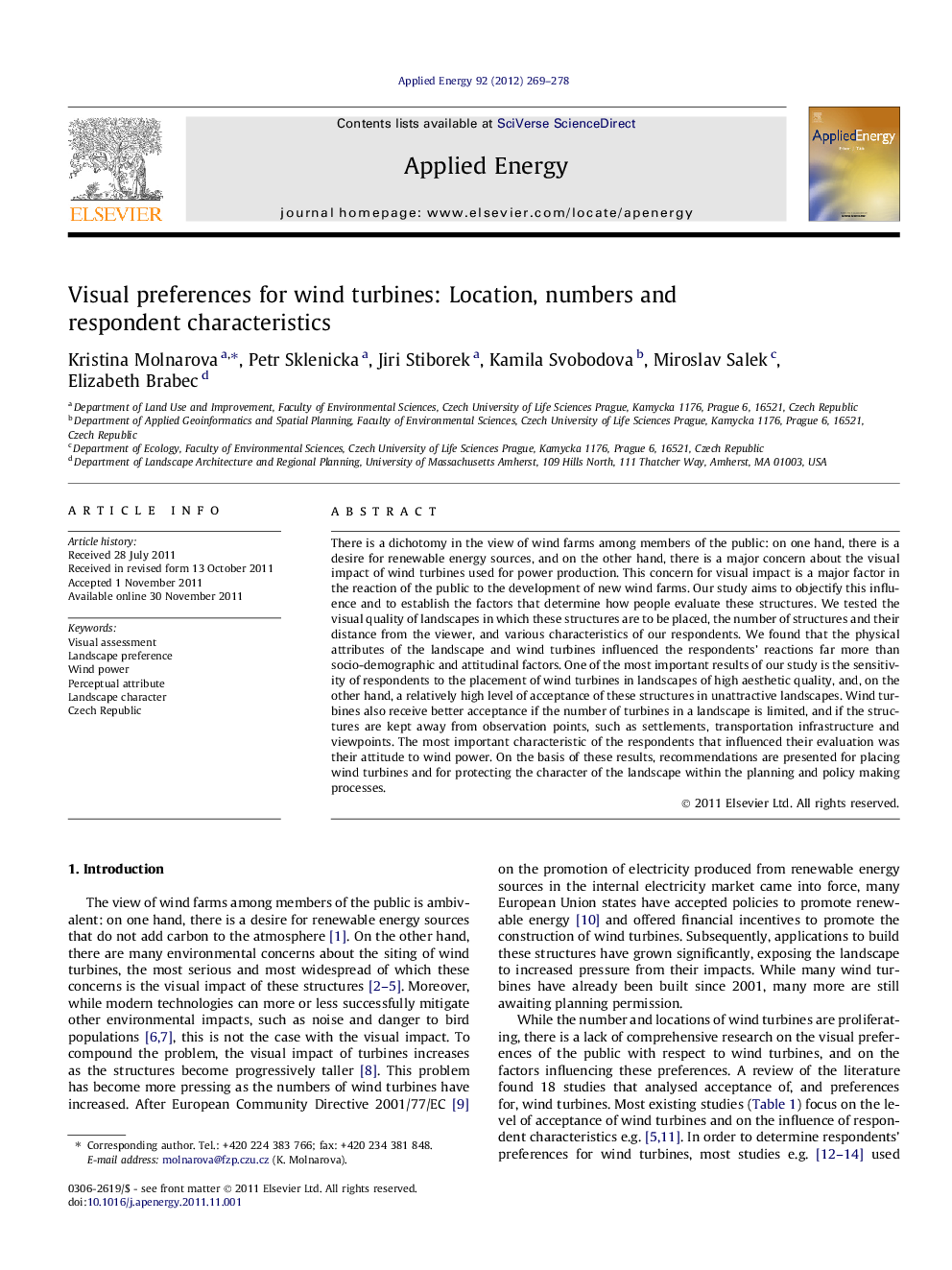| کد مقاله | کد نشریه | سال انتشار | مقاله انگلیسی | نسخه تمام متن |
|---|---|---|---|---|
| 243602 | 501931 | 2012 | 10 صفحه PDF | دانلود رایگان |

There is a dichotomy in the view of wind farms among members of the public: on one hand, there is a desire for renewable energy sources, and on the other hand, there is a major concern about the visual impact of wind turbines used for power production. This concern for visual impact is a major factor in the reaction of the public to the development of new wind farms. Our study aims to objectify this influence and to establish the factors that determine how people evaluate these structures. We tested the visual quality of landscapes in which these structures are to be placed, the number of structures and their distance from the viewer, and various characteristics of our respondents. We found that the physical attributes of the landscape and wind turbines influenced the respondents’ reactions far more than socio-demographic and attitudinal factors. One of the most important results of our study is the sensitivity of respondents to the placement of wind turbines in landscapes of high aesthetic quality, and, on the other hand, a relatively high level of acceptance of these structures in unattractive landscapes. Wind turbines also receive better acceptance if the number of turbines in a landscape is limited, and if the structures are kept away from observation points, such as settlements, transportation infrastructure and viewpoints. The most important characteristic of the respondents that influenced their evaluation was their attitude to wind power. On the basis of these results, recommendations are presented for placing wind turbines and for protecting the character of the landscape within the planning and policy making processes.
► We study the visual impact of wind turbines under various conditions.
► Wind turbines are significantly more acceptable in unattractive landscapes.
► Number of wind turbines and distance from viewer play a major role.
► Consistent findings for various categories of respondents.
► How wind turbine projects can be made more acceptable to the public.
Journal: Applied Energy - Volume 92, April 2012, Pages 269–278